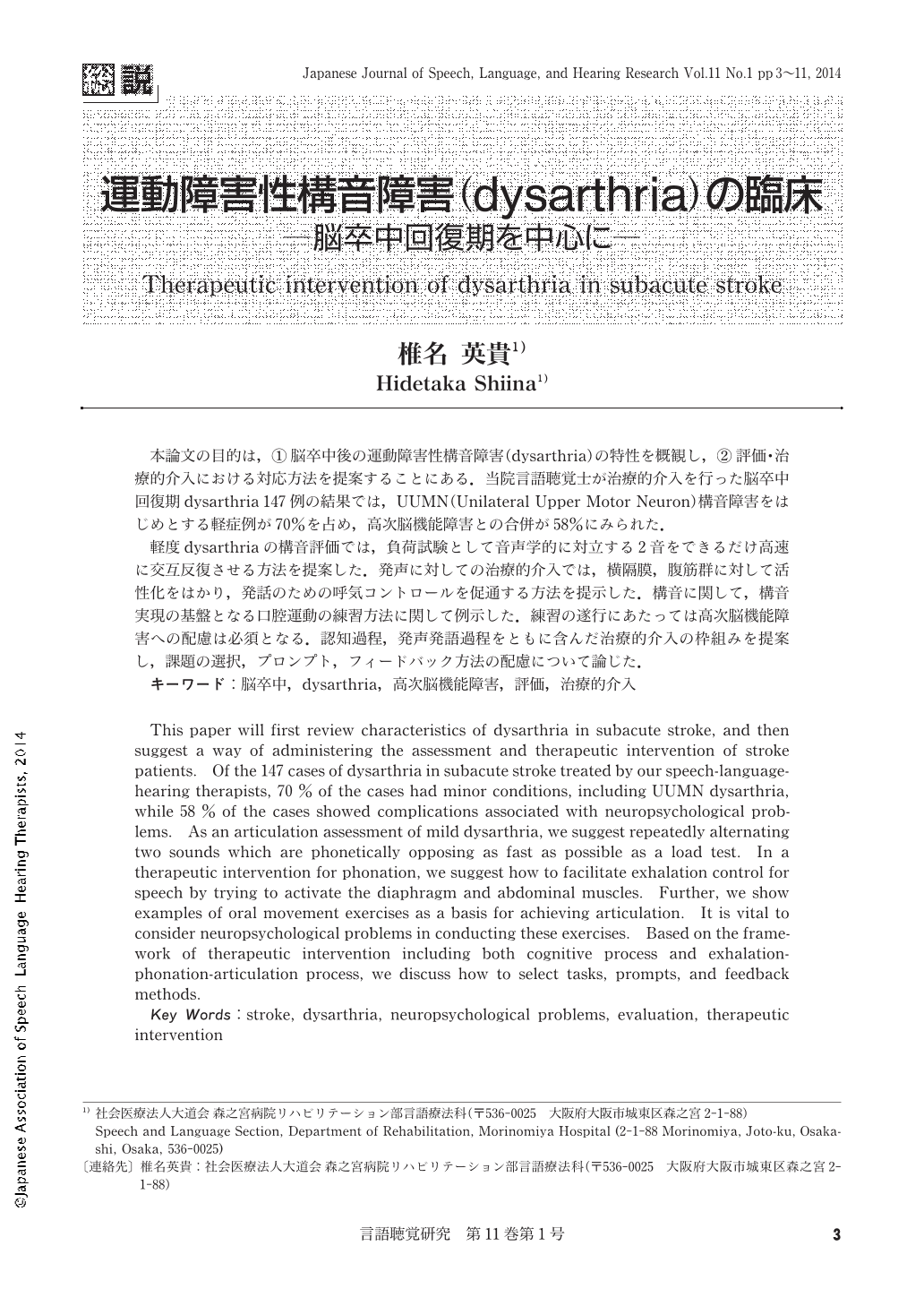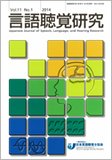Japanese
English
- 有料閲覧
- Abstract 文献概要
- 1ページ目 Look Inside
- 参考文献 Reference
本論文の目的は,①脳卒中後の運動障害性構音障害(dysarthria)の特性を概観し,②評価・治療的介入における対応方法を提案することにある.当院言語聴覚士が治療的介入を行った脳卒中回復期dysarthria147例の結果では,UUMN(Unilateral Upper Motor Neuron)構音障害をはじめとする軽症例が70%を占め,高次脳機能障害との合併が58%にみられた.
軽度dysarthriaの構音評価では,負荷試験として音声学的に対立する2音をできるだけ高速に交互反復させる方法を提案した.発声に対しての治療的介入では,横隔膜,腹筋群に対して活性化をはかり,発話のための呼気コントロールを促通する方法を提示した.構音に関して,構音実現の基盤となる口腔運動の練習方法に関して例示した.練習の遂行にあたっては高次脳機能障害への配慮は必須となる.認知過程,発声発語過程をともに含んだ治療的介入の枠組みを提案し,課題の選択,プロンプト,フィードバック方法の配慮について論じた.
This paper will first review characteristics of dysarthria in subacute stroke, and then suggest a way of administering the assessment and therapeutic intervention of stroke patients. Of the 147 cases of dysarthria in subacute stroke treated by our speech-language-hearing therapists, 70 % of the cases had minor conditions, including UUMN dysarthria, while 58 % of the cases showed complications associated with neuropsychological problems. As an articulation assessment of mild dysarthria, we suggest repeatedly alternating two sounds which are phonetically opposing as fast as possible as a load test. In a therapeutic intervention for phonation, we suggest how to facilitate exhalation control for speech by trying to activate the diaphragm and abdominal muscles. Further, we show examples of oral movement exercises as a basis for achieving articulation. It is vital to consider neuropsychological problems in conducting these exercises. Based on the framework of therapeutic intervention including both cognitive process and exhalation-phonation-articulation process, we discuss how to select tasks, prompts, and feedback methods.

Copyright © 2014, Japanese Association of Speech-Language-Hearing Therapists. All rights reserved.


